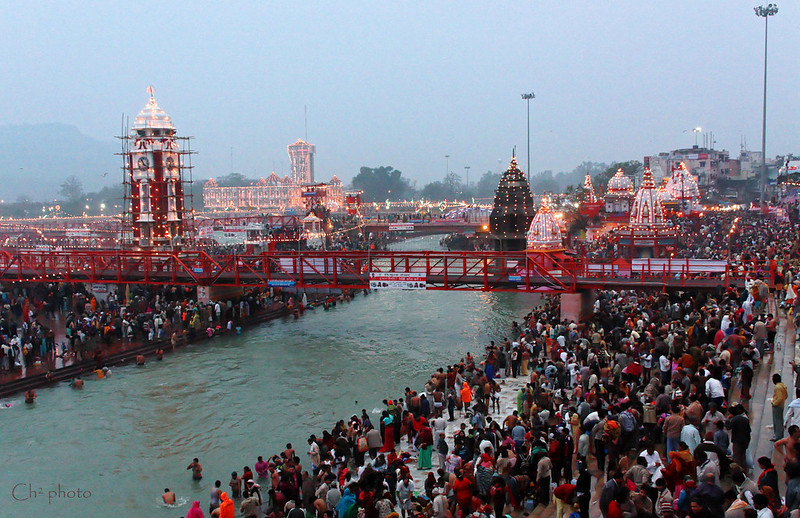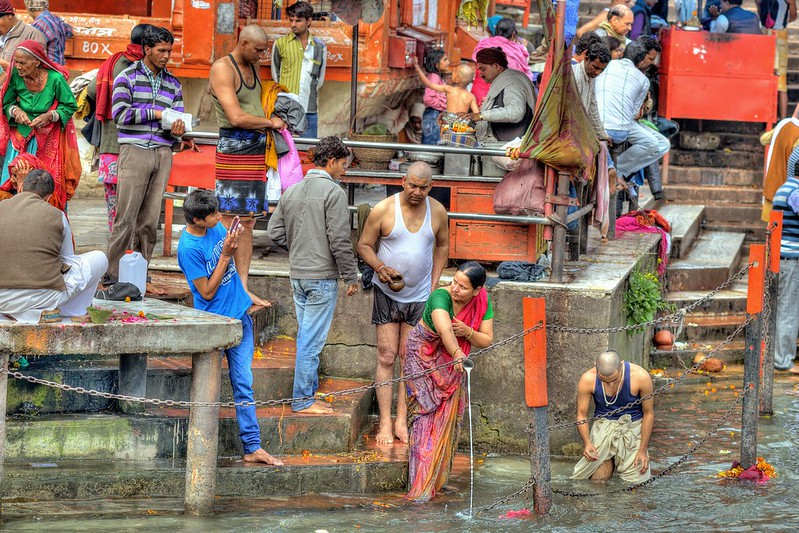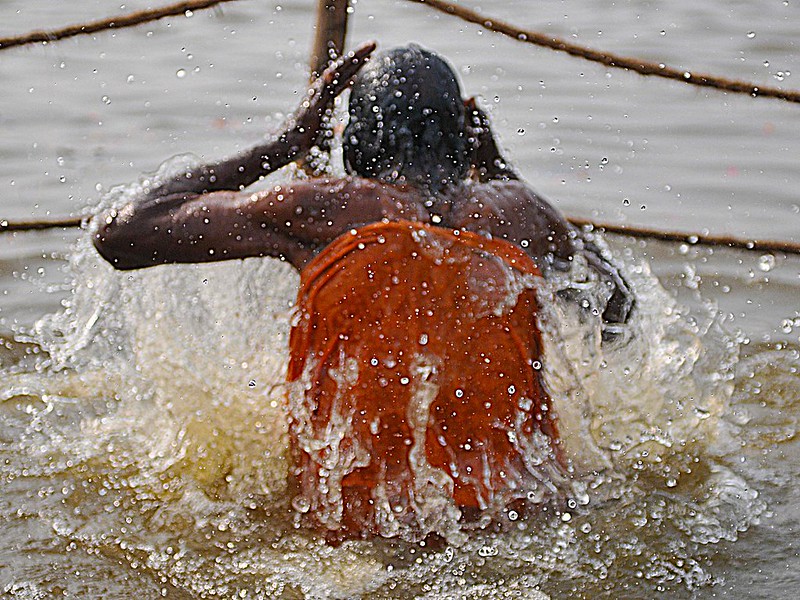Kumbh Mela
A sacred festival where faith and the human experience converge-the world’s largest spiritual gathering.
2025/01/12 - 2025/02/25
Kumbh Mela is the world’s largest religious gathering and pilgrimage, where millions of Hindus bathe in sacred rivers seeking spiritual purification and liberation.
Every few years, India becomes the stage for this colossal event, rotating between the four holy sites of Prayagraj (Allahabad), Haridwar, Nashik, and Ujjain. Tens of millions-sometimes hundreds of millions-of pilgrims, ascetics, and travelers from around the world converge on the riverbanks, which transform into sprawling tent cities. The air is filled with the scent of incense and woodsmoke, the ringing of temple bells, devotional songs, and the vibrant saffron robes of sadhus. Through ritual bathing, grand processions, and nightly Ganga Aarti ceremonies, Kumbh Mela offers an unparalleled immersion into India’s living faith and the overwhelming energy of humanity united in devotion.
Main Attractions
Shahi Snan (Royal Bath) and Bathing at the Sacred Confluence
The heart of Kumbh Mela is the ritual bathing at the confluence (Sangam) of sacred rivers. In Prayagraj, this is the Triveni Sangam, where the Ganges, Yamuna, and mythical Saraswati rivers meet. On auspicious mornings, millions gather before dawn as the Shahi Snan (Royal Bath) begins, led by processions of naga sadhus (ash-covered naked ascetics) and akharas (monastic orders). It is believed that bathing here washes away sins and grants moksha (liberation).
Grand Processions, Akhara Camps, and Naga Sadhus
During the festival, naga sadhus, mahants (spiritual leaders), and saints parade on elephants and horses, blowing conch shells and waving banners. Akhara camps open to visitors, offering glimpses into yoga, meditation, philosophical debates, and fire rituals (yajna). The atmosphere is charged with kirtan (devotional singing), pravachan (spiritual discourses), and fire ceremonies, enveloping the entire grounds in spiritual fervor.
Ganga Aarti and Night Rituals
At dusk, the riverbanks glow with thousands of diyas (oil lamps) during the Ganga Aarti. The mingled scent of incense and river breeze, priests waving flames, and the sound of hymns create a sacred, awe-inspiring scene. Nights feature classical music, dance, laser shows, and meditation or satsang (spiritual gatherings) under the stars.
Costumes and Decorations
Kumbh Mela is a feast of color and tradition. Men wear dhotis or saffron robes, women don vibrant saris or salwar kameez. Naga sadhus are instantly recognizable by their ash-covered bodies, rudraksha beads, and dreadlocks. The grounds are adorned with flags, gateways, and marigold garlands, while tents and ashrams create a “mini India” reflecting the country’s cultural diversity.
Traditional Food & Drink
The festival is strictly vegetarian, with food stalls and communal kitchens (anna dana) feeding thousands daily. Pilgrims share mahaprasada (blessed food) and prasad-simple, nourishing dishes like khichdi, puri, sabzi, and sweets. Festival treats include jalebi, malpua, kesar puri, and saffron thandai. The aroma of spices, fried snacks, and chai fills the air, making food an integral part of the spiritual experience.
Cultural and Historical Background
The origins of Kumbh Mela are deeply rooted in ancient Hindu mythology and history. The most famous legend, found in the Puranas, tells of the Samudra Manthan (Churning of the Ocean), where gods (Devas) and demons (Asuras) churned the cosmic ocean in search of amrit, the nectar of immortality. As Lord Vishnu’s avatar Mohini carried the kumbh (pitcher) of amrit to heaven, drops of the nectar fell at four earthly sites-Prayagraj, Haridwar, Nashik, and Ujjain-making them sacred. During the festival, it is believed that the rivers at these sites are imbued with the power of immortality, and bathing in them brings immense spiritual merit and liberation.
The tradition of mass gatherings at these sites dates back to at least the 7th century, when King Harsha organized grand religious assemblies at Prayag, as recorded by the Chinese monk Xuanzang. Over time, Kumbh Mela evolved into a massive cyclical pilgrimage, rotating every 12 years among the four cities, with the greatest Maha Kumbh held every 144 years at Prayagraj. The festival’s spiritual and organizational heart is the akhara-monastic orders of ascetics, many tracing their roots to the 8th-century philosopher Adi Shankara. Naga sadhus and other akharas lead the processions and Shahi Snan, preserving centuries-old traditions of yoga, debate, and martial arts.
Kumbh Mela is more than a festival; it is a living tradition uniting millions across caste, sect, and region in a quest for purification, wisdom, and community. Pilgrims bathe in the holy rivers, listen to the teachings of sadhus, and participate in rituals believed to cleanse sins and bring moksha (liberation). For centuries, Kumbh Mela has symbolized India’s enduring faith, diversity, and the universal human search for the divine.
Participant Voices
At dawn on the day of the Shahi Snan, I joined millions heading to the river. The sound of conch shells, the prayers and river dives of the naga sadhus, and the chill of the Ganges-it was overwhelming and deeply moving.
Fun Facts
- Kumbh Mela is the world’s largest peaceful gathering, with over 50 million people attending on the main bathing days.
- The Maha Kumbh Mela at Prayagraj is held only once every 144 years.
- The festival grounds become a “mini India,” with languages, cuisines, and traditions from all over the country.
Festival Dates
The event schedule is subject to change. Please check the official website for the most up-to-date information.
Media
Information
| Name | Kumbh Mela |
| Country | India |
| Area | |
| Date | 2025/01/12 - 2025/02/25 |
| Link |
Upcoming Festivals
Whirling Dervishes Festival Turkey
A Mesmerizing Dance of Divine Love
2025/12/06Mevlana Celaleddin Rumi Commemoration Ceremony ( Şeb-i Arus ) Turkey
A Whirling Journey to Divine Love
2025/12/10Dia de la Virgen de Guadalupe Mexico
A Festival Weaving Faith, Fervor, and Mexican Identity
2025/12/11L'Escalade Switzerland
Geneva’s Grand Winter Festival of Courage, Chocolate, and Community
2025/12/12Umkhosi Wokweshwama South Africa
The Zulu First Fruits Festival—A Sacred Celebration of Land, Ancestors, and Renewal
2025/12/12Lucia Festival (St. Lucia's Day) Sweden
A Festival of Light Illuminating the Nordic Darkness
2025/12/15Las Posadas Mexico
The Luminous Quest for Sacred Shelter
2025/12/22Noche de Rabanos (Night of the Radishes) Mexico
A celebration blending art, farming heritage, and cultural traditions
2025/12/23Chant of the Sybil on Majorca Spain
A Medieval Prophecy Echoes Through Majorcan Christmas
2025/12/23‘Hatajo de Negritos’ and the ‘Hatajo de Pallitas’ Peru
A Christmas Festival of Rhythm, Faith, and Afro-Andean Heritage in Peru’s Ica Region



